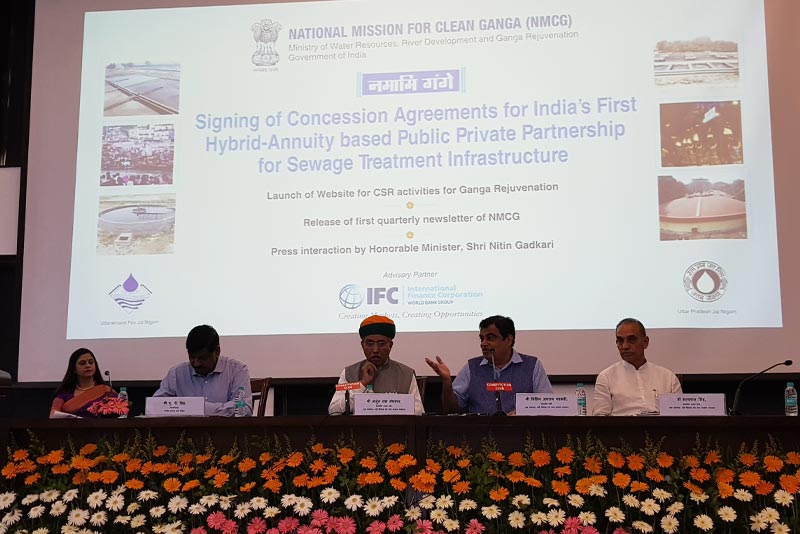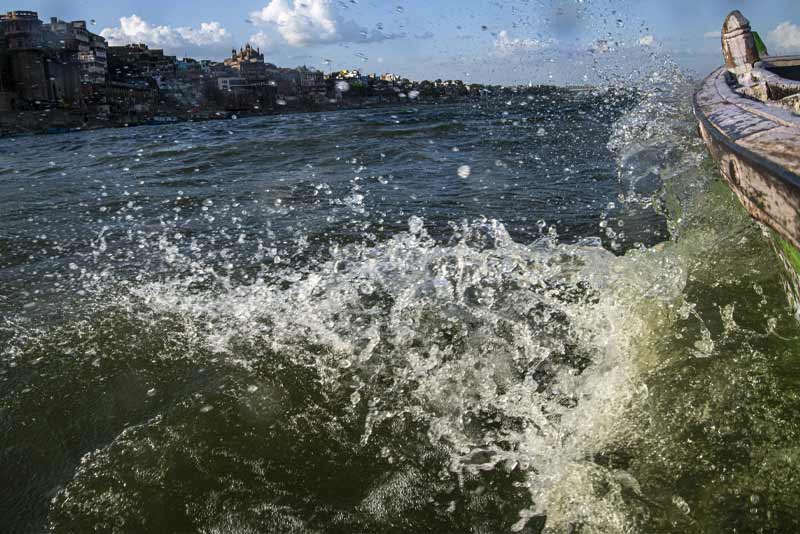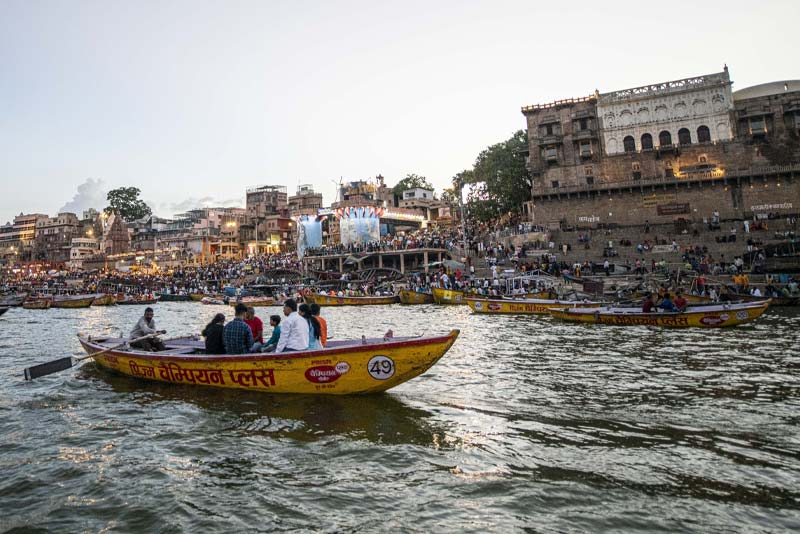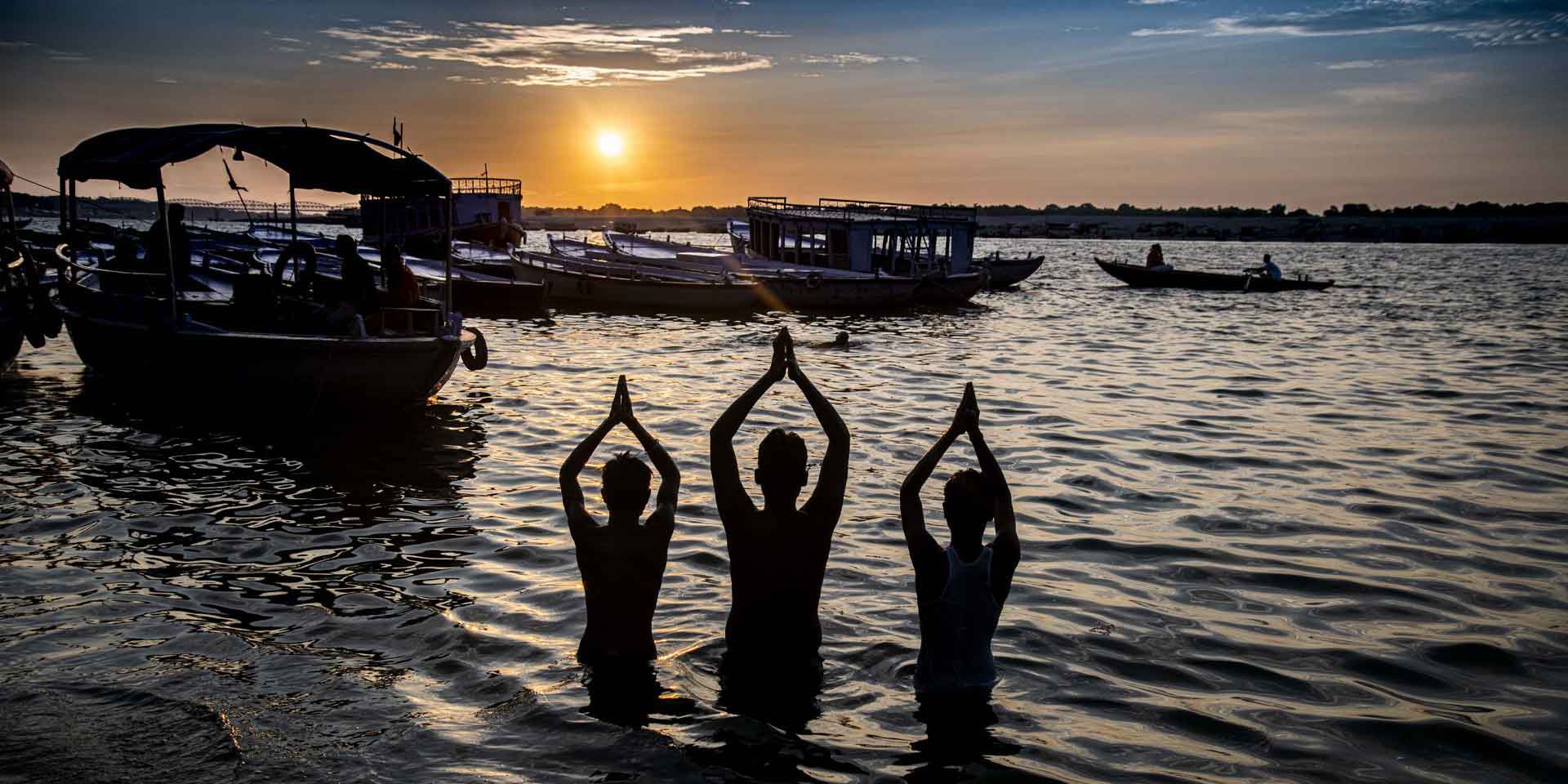The Clean Ganga project is steadily rejuvenating the River, while improving people’s health and livelihoods in its river basin. The project is also helping to mitigate the climate impact on the Sundarbans, one of the largest mangrove forests in the world.
By John Narayan Parajuli and Manuela Virginia de Souza
The Ganga or Ganges is Hinduism’s most sacred river. This is exemplified by the pilgrimage sites which dot its 2,500 km long course across northern India, but it is not only its religious and cultural significance which makes the river so important. The Ganga River basin covers a quarter of India’s landmass and generates over 40 percent of its GDP. The river is also a source of water and livelihoods for 500 million people, nearly 43 percent of the country’s population. It’s economic, environmental, and ecological importance to India is immense.
Despite this importance to the country, the Ganga has been affected by water pollution, which has been brought on by ever-increasing urbanization and industrialization which has impacted its water quality, biodiversity, and environmental sustainability.
Over 75% of the sewage generated in the towns and cities along the Ganga flows untreated into the river. It is estimated that 12,000 million litres of sewage is generated in the Ganga basin every day, including 3000 million liters per day (MLD) of sewage ― mostly comprising of domestic waste water and industrial effluents ― into the main stem of the river located near water sources used for washing, bathing, and drinking.
Past decades were marked by numerous efforts by the Government of India to clean up the river by building municipal wastewater and sewage treatment infrastructure. But these have not succeeded as hoped, with less than 50 percent of wastewater treatment plants being classified as functional or meeting discharge standards.

The post- concession signing ceremony for India's First Hybrid-Annuity PPP on Sewage Treatment, 2017. Photo by: Neeraj Gupta/IFC
Against this backdrop, the Government of India established the Namami Gange (Clean Ganga) program in 2014. The program is an Integrated Conservation Mission and was approved as a flagship initiative by the National Mission for Clean Ganga (NMCG), under the Government of India’s Ministry of Jal Shakti.
The World Bank Group is a committed partner in these efforts, building institutional capacity and financing key infrastructure investments, with IFC advising on India’s first Hybrid-Annuity Model (HAM) public-private partnerships to build and sustainably operate sewage treatment plants (STPs) along the Ganga.
As lead transaction advisor, IFC worked with the government and World Bank experts to adapt the innovative HAM PPP model for the sewage sector, including linking payments to the operator to strict performance indicators to ensure the sustainable operation of the plants. IFC also had to find creative ways to boost revenue opportunities for bidders to increase the bankability of the projects and reduce the cost to the government, such as selling treated wastewater to the Indian Oil Corporation to help cool its refinery, saving 20 million liters of fresh water a day.
In 2017, the NMCG and IFC piloted HAMs for STPs in three cities: Haridwar in Uttarakhand and Varanasi, and Mathura in Uttar Pradesh.
“This PPP project to help rejuvenate the Ganga River is truly transformative,” says Linda Munyengeterwa, IFC’s Global Director of Public Private Partnerships & Corporate Finance Advisory. “It's heartwarming to see how collaboration among stakeholders is breathing life back into this important river. Through the innovative HAM PPP, significant improvements have been made in reducing pollution, restoring biodiversity, and enhancing water quality. This restoration project serves as a shining example of what can be achieved as a result of concerted efforts from the public and private sector.”
IFC has also invested in a STP project in Kolkata, which is led by VA Tech Wabag, a firm focused on building clean water infrastructure around the globe. Last year, the project received the IJ Global 'Asia Pacific Water Deal of the Year' Award for 2021. The award recognizes the project's potential transformative impact in improving drinking and industrial water supplies, as well as reducing stress on groundwater.
The Namami Gange program, including the HAM projects, has made a significant contribution to the restoration process of the river. The effort was recognized by the United Nations “as one of 10 pioneering efforts to revive the natural world” during the UN Biodiversity Conference in December 2022.
“The Ganga is a lot cleaner compared to before,” said Babu Sahni, a boatman. “People used to throw garbage and flowers in the river, they would immerse idols, and use soap and oil to wash clothes in it. There used to be small drains and sewers that emptied into the Ganga. We do not see this anymore.”

A small boat sails through the comparatively cleaner waters of the Ganga in Varanasi. Photo by: Priyanka Parashar
The fully commissioned treatment plant in Haridwar, Uttarakhand, has an aggregate capacity of 82 MLD, while the one in Varanasi, Uttar Pradesh, has a capacity of 50 MLD.
“Since these plants filter the water from the small drains and rivulets that flow into the Ganga, we have been able to see a cleaner river,” said Surari Pandey, a professor at Jananayak Chandrashekhar University.
The improvement in water quality has also meant gains on eradicating water-borne diseases. “There is less breeding space for mosquitos, which lowers the risk of malaria and dengue cases,” said Pandey. “Earlier, people used to defecate near the ghats, which led to flies spreading more diseases. All of that has stopped.”
In Varanasi, the ghats ― a series of riverfront steps leading down to the water ― alongside the Ganga are a big draw for visitors, and have been developed as tourist spots, improving the livelihoods of small local businesses.
“More tourists bring more profits. The business in my shop has grown and with it our earnings,” said Anita Seth, a seller of prasadam or sanctified food.
While cleaning the river is a long-term process, the hybrid annuity model IFC helped create is now the foundation for dozens of additional sewage treatment PPPs along the sacred river. By piloting the model, proving its viability, and replicating its initial success, the government of India is now scaling up this program on a massive level, with NMCG already having replicated it in 11 cities across three states, amounting to $500 million in private sector investment and multiplying the positive environmental and social impacts of WBG's efforts.
 Domestic tourists enjoy a boat ride along the river Ganga. Photo by: Priyanka Parashar
Domestic tourists enjoy a boat ride along the river Ganga. Photo by: Priyanka Parashar
Towards the eastern part of the country, in West Bengal, IFC has invested in the Ganga Sewage Treatment Plant Project Private Limited (GSPPL), a joint venture between VA Tech Wabag and Kathari Water Management. Partnering with the Kolkata Metropolitan Development Authority, the project comprises three wastewater treatment plants, which have a cumulative capacity of 187 MLD.
These plants are expected to reduce the discharge of untreated sewage into the river by approximately 15 percent, which could have a direct impact on the endangered Sundarbans mangroves, which covers districts in West Bengal and divisions in Bangladesh near the Bay of Bengal.
The largest mangrove forest in the world has been severely impacted by climate change. Islands have been disappearing due to rising sea levels, and the health of its forests have been jeopardized by growing salinity levels in water and soil. This problem is exacerbated during the dry season when, unlike during the monsoon, the rivers recede, and saltwater enters the mangrove forests and farmlands.
Experts from NMCG believe that the holistic and multi-sectoral approach taken to rejuvenate the Ganga can help protect the Sundarbans by ensuring a minimum environmental flow in the river throughout the year.
The HAM is the first-of-a-kind in sewage treatment in India and is being replicated in cities across Uttar Pradesh and West Bengal as well as in Bihar, potentially delivering 1500 MLD of treated water to 15 million people. A similar framework is also being scoped for projects in other Indian states (Telangana, Karnataka, Tamil Nadu) and South Asian countries (Sri Lanka and Bangladesh).
"IFC is building on its previous successes with local governments to tap private sector expertise and finance to support the public good," said IFC's Regional Industry Director for Infrastructure for Asia and the Pacific, Isabel Chatterton. "We are hopeful that concerted efforts from the public and private sector with the participation of citizens will restore the Ganga to its natural state."
Published in June 2023
